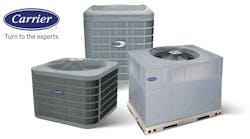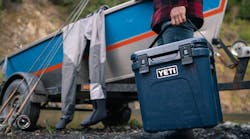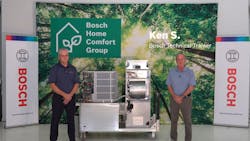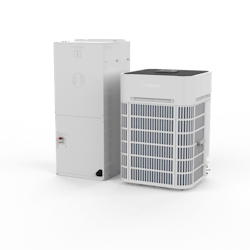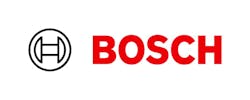HVACR contractors are challenged with concerns about GWP (global warming potential), which compares the global warming impacts of different gases. Currently, the most critical challenges for HVACR contractors stem from the regulatory changes concerning HFC (hydrofluorocarbons) refrigerants—which are many times more polluting than carbon dioxide—that are coming down from various agencies around the world. This includes the European Commission’s F-gas Regulation and MAC Directive, Canada’s ongoing changes through the HRAI (Heating, Refrigeration, and Air Conditioning Institute), and, in the U.S., the AIM Act and the Kigali Amendment to the Montreal Protocol. HVACR contractors will need to adhere to specific requirements in reference to these new regulations.
Here are a few of the challenges contractors are facing:
- Is A2L refrigerant safe?
- How do I safely evacuate the new A2L refrigerant from an equipment?
- Can R-454b be introduced into an existing R-410a system?
Training and education
As with any industry change, training and education is a challenge. Often, contractors and distributors turn to manufacturers to assist, which is why Bosch Home Comfort is at the forefront of education and training. The company offers free daily trainings through its sales representatives and in-house trainers and has training facilities at all its representatives’ locations. Bosch also has vehicle roadshows that are used for trainings around the country for suppliers, distributors, technicians, and installers. The company will soon begin offering training sessions to Bosch technicians on how to safely install and maintain next generation low-GWP refrigerants. An in-depth guide to the A2L transition is now available to everyone at bosch-homecomfort.us/A2L.
Traditionally, Bosch provided exclusively hands-on, in-person training. It has recently expanded its training with online offerings to enhance accessibility and flexibility, empowering learners with on-demand access and enriching their digital experience (see Photo 1). The company launched video sessions featuring its in-house team or visiting contractors performing hands-on training. In addition to expanded digital training, Bosch continues to bring training directly to its customers.
Regardless of whether training is done in-person or through digital streaming, Bosch has the ability to live cast its equipment’s parameters and operating conditions. This approach allows students to learn how to perform specific troubleshooting tasks directly related to those error codes. This enables technicians to become extremely well-versed in how to quickly identify and repair numerous common equipment malfunctions.
Photo 1: Bosch found that its web-based training was effective and convenient for its contractors and distributors.
Whole home solutions
Contractors must consider multiple factors when working with homeowners, including manufacturer or government rebates and incentives that can impact the sales volumes of particular units. Environmental factors such as temperature swings, precipitation levels, and altitude also affect what products are sold and installed in a particular region. For example, the warmer climate in many southern states provides contractors an opportunity to expand heat pump sales.
Name recognition is another way that contractors can advance their businesses. Customers tend to trust what is familiar. So, if a contractor recognizes a homeowner already uses Bosch products, it’s easier to rely on the customer’s experience with the brand to cross-sell additional equipment. For example, if a homeowner owns a Bosch heat pump and finds that it performs well, it’s easier to transfer that sense of trust to other systems for the home, such as a heat pump water heater. This is equally true when a contractor is selling to a builder who might need additional major appliances such as refrigerators and dishwashers.
Bosch heat pump products
One of Bosch’s unique heat pump options is its IDS Ultra, which is a cold climate heat pump (see Photo 2). These pumps can function at 100% capacity down to 5 degrees Fahrenheit. The unit was designed to be smaller, less bulky, and lighter weight than other units on the market, enabling smooth transportation from the warehouse to a home. It’s also easier for the contractor to move the unit into place inside the home, which may offer a limited workspace. The IDS Ultra will be available by the end of Q3.
The company’s newest products include their RL and CL series Water Source Heat Pumps. These are the first Bosch Home Comfort products to roll out with the new A2L refrigerants. Both are designed for retrofits as well as new construction and are easy to service. The RL is available in vertical and horizontal sizes, copper or cupronickel water coil, galvanized steel cabinets, and a stainless-steel drain pan. The CL series features a swinging electrical box, improved air coil serviceability, and water coil and air coil freeze protection.
Conclusion
While the GWP refrigerant changes have presented challenges for contractors, they can be overcome through training on the regulations that affect the storage, handling, installation, and service of equipment. Contractors must also understand which systems meet the new requirements. Further, knowing that they have the support of Bosch Home Comfort products, which offers a whole home solution of products, provides them confidence that they can meet a homeowner’s needs.
Sponsored by:



